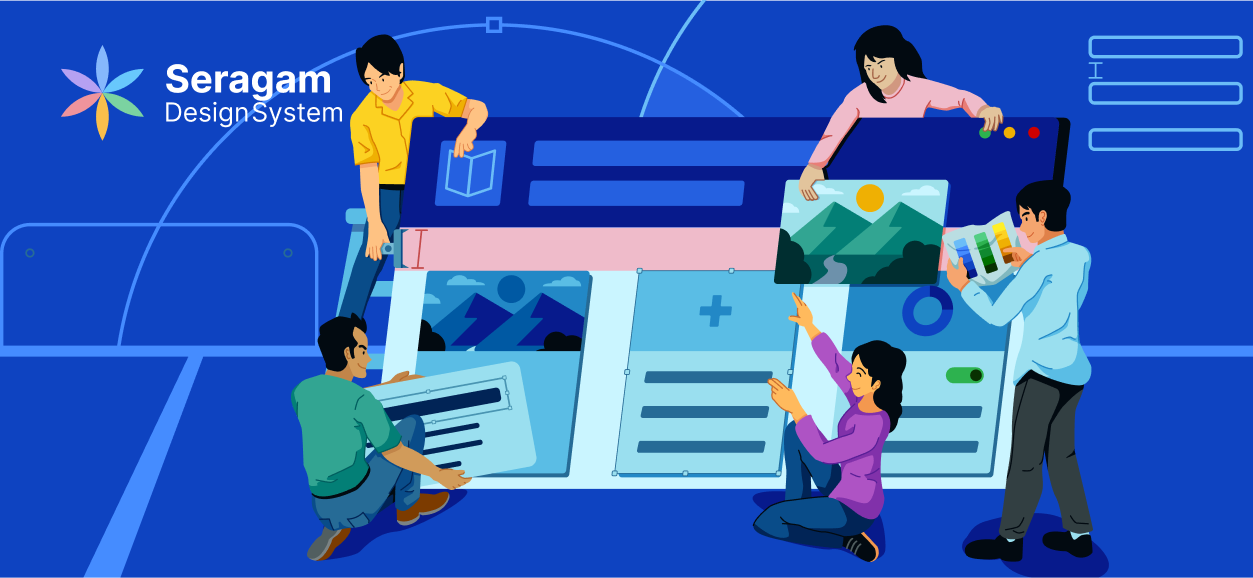Introduction
Recently created a project page on my personal website where I showcase some of the projects I've built. One of them is called Seragam UI, which is a design system library that I developed specifically for Govtech Edu. It helps frontend developers create user interfaces that are consistent, accessible, and easy to use. I built Seragam UI from scratch using a monorepo structure, and I made sure to prioritize a great developer experience and the latest web standards. The library also has built-in support for theming and server-side rendering (SSR), making it easy for developers to customize and optimize their interfaces for performance and SEO.
Design structure
Monorepo structure
One of the key decisions I made when building Seragam UI was to use a monorepo structure. This means that I kept all the code for the library in a single repository, even though it's made up of many different packages and components. This approach facilitated development and maintenance in a few ways.
-
First, it made it easier to keep everything in sync. Since all the code is in one place, I didn't have to worry about version mismatches or dependencies getting out of date. This helped me catch bugs and issues earlier in the development process.
-
Second, it made it easier to share code between different parts of the library. For example, if I needed to update a utility function that was used in multiple components, I only had to make the change in one place. This reduced the risk of introducing inconsistencies or errors.
-
Finally, it made it easier to manage the build and deployment process. By using a monorepo, I was able to set up a unified build pipeline that would automatically build and test all the packages and components whenever I made a change. This helped me catch errors early and reduce the time it took to get new features and bug fixes into production.
Overall, I found that using a monorepo structure for Seragam UI was a great decision. It allowed me to work more efficiently, catch issues earlier, and reduce the risk of introducing inconsistencies or errors.
Technical details
Describe some of the technical details of Seragam UI, such as the programming languages and libraries used, and how the library is organized and structured.
Features and benefits
Describe some of the key features of Seragam UI, such as support for theming and server-side rendering, and discuss how these features benefit developers who use the library.
Conclusion
Summarize the main points of your article and encourage readers to try out Seragam UI for their own projects.
Introduction:
- Introduce the Seragam UI design system library and its main features, including support for theming and server-side rendering (SSR).
- Mention that the library was built from scratch using a monorepo structure.
- Highlight the focus on developer experience and accessibility.
Monorepo structure:
- Explain what a monorepo is and why it is a good choice for a design system library.
- Describe the structure of the Seragam UI monorepo and how it supports the library's features and functionality.
- Discuss the benefits and drawbacks of using a monorepo structure for the design system library.
Developer experience and accessibility:
- Discuss the importance of developer experience and accessibility for a design system library.
- Explain how the Seragam UI library was designed and implemented to support these goals.
- Discuss any challenges faced during the development of the library and how they were overcome.
Theming and SSR:
- Explain what theming and SSR are and why they are important for a design system library.
- Describe how the Seragam UI library supports theming and SSR, including any customization options available to developers.
- Discuss the benefits of using theming and SSR for the design system library and how they improve the user experience.
Conclusion:
- Summarize the key points of the article and the main achievements of the Seragam UI design system library.
- Discuss the potential future developments for the library and how they may further improve developer experience and accessibility.
